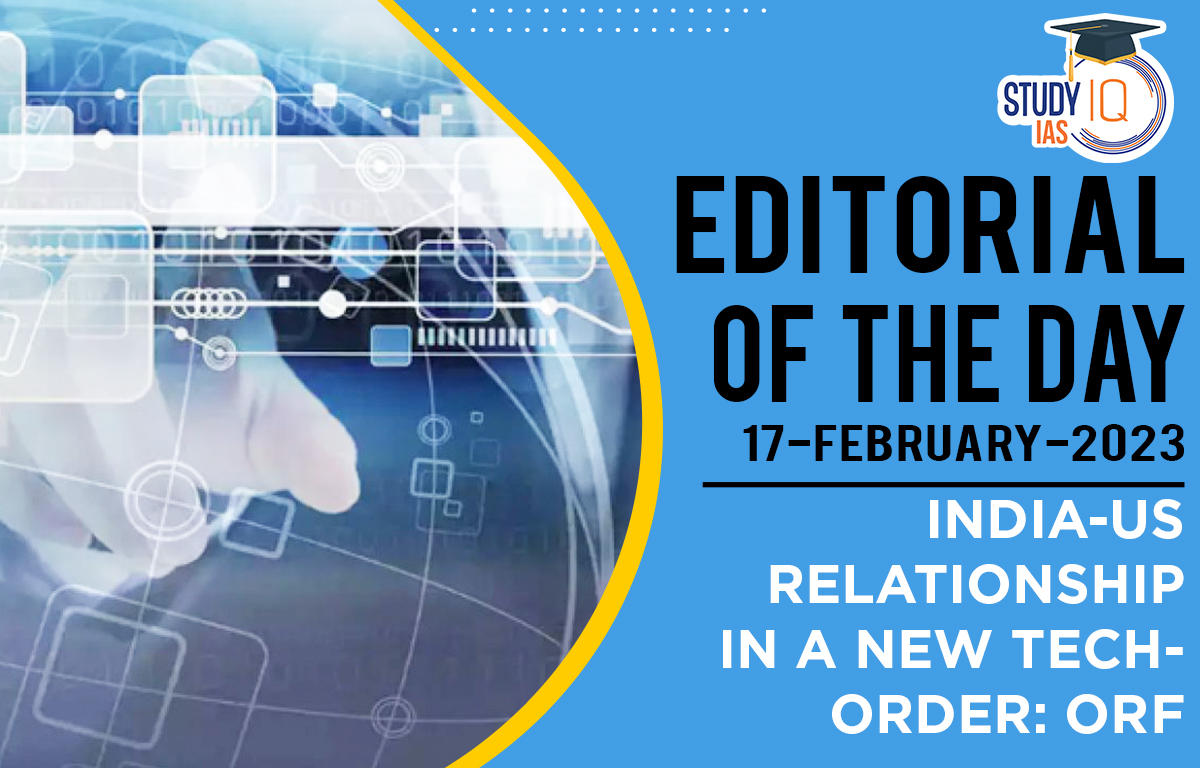Table of Contents
The National Security Advisor of India visited the US for the launch of the U.S.-India initiative on Critical and Emerging Technology (iCET).
Initiative on Critical and Emerging Technology (iCET).
- iCET announced during the Quad summit 2022 is not just an elevation of India-US strategic partnership but also a step towards adapting to new strategies in the Indo-Pacific region.
- Leading iCET: The iCET will be led by the U.S. National Science Foundation and Department of Science and Technology of India.
- Objectives: It aims to foster a partnership joining six of India’s Technology Innovation Hubs to support at least 25 joint research projects with the US in fields such as AI and data science and apply its gains to agriculture, health and climate, and other fields.
- iCET adopts the idea of the free and open Indo-Pacific and commitment to fostering an open, accessible, and secure technology ecosystem, underlined with mutual trust.
- Significance: The iCET’s promise of shared technological advancements has direct links to democratic values in the way they are designed, developed and used.
Why Focus on Critical Emerging Technologies?
- Critical and emerging technologies, such as advanced computing, nuclear energy technologies, AI, autonomous systems and robotics are at the very core of national security concerns of both India and the US.
- They could become central to maintaining a sustained relationship between partners in the Indo-Pacific, resilient supply chains as well as in ensuring a favourable balance of power in the region.
- Incorporating emerging technologies into their domestic and bilateral channels through iCET must take into consideration that CET is a quicksilver domain and constantly needs to be updated contingent on advancements.
How Technology can Reshape the Current World Order?
- The US-China relations: The emerging tech competition between the US and China will have a bearing on the trust based partnerships in the Indo-Pacific, including between the US and India.
- The regulatory imposition in the semiconductor industry is expected to slow down and restrain Chinese tech advances. This has given rise to ‘Chip war’.
- The recent ‘spy balloon’ incident has shown that technology can allow countries to challenge sovereignty, gather information on critical and sensitive assets.
- Indo-China relations: China is using technology to reduce India’s influence in the Indian Ocean region, thus changing the landscape of strategic competition.
- Technological advancement in the fields of maritime domain awareness, underwater activities and reconnaissance can alter balance of power.
Way Forward
- After the Covid-19 pandemic, countries such as India have tried to remain ahead in a turbulent environment by making gains through sustained and adaptive technological cooperation as well as tech-driven initiatives.
- With iCET providing the roadmap, India and the US are rapidly adapting to the changing realities of the global order.
- Two ways in which this shift is taking place– recalibrations in regional roles and expectations in the Indo-Pacific region and preparing the bilateral relationship for the challenges of a new technology order that can shape the geopolitics and the geo-strategy of the regional stakeholders.
Conclusion
- Being strong bilateral and plurilateral partners, India and the US share common regional goals which could be strengthened by initiatives like the iCET.
- iCET could prove a pivotal moment in the emerging tech-order of the Indo-Pacific and pave the way for a joint leadership in the region.





















 WhatsApp
WhatsApp